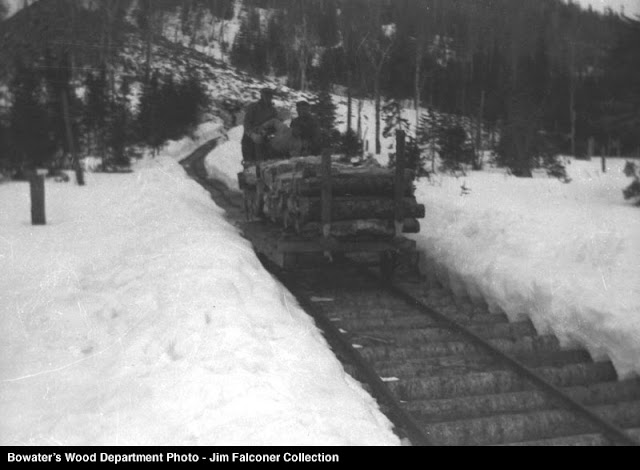 |
| Sandra Wheeler, Crystal Braye, Terra Barrett, and Dale Jarvis. |
Dale and I are out on the west coast of the province as part of the Collective Memories Project. Tuesday afternoon after a breakfast with folklorists Crystal Braye and Sandra Wheeler we headed to Reidville in the Humber Valley. We met with another folklorist Amanda-Marie Hillyard who is from the community and set up an interview with Clifford Reid, a local history buff and a descendant of the original Reid’s of Reidville. Following the interview Clifford took us on a tour of the town pointing out how the land was originally parceled out, the location of the old tram system, and where people would the leave the community to paddle their canoes to Deer Lake.
 |
| Dale Jarvis and Clifford Reid. |
Clifford described how the community was settled by his grandfather and his uncles in the 1930s following one uncle’s move to Junction’s Brook across the river from the land that became Reidville. Clifford’s uncles and his grandfather moved to the area in order to work as loggers and farmers. The main work in the area was at the lumber camps feeding logs into the river system bound for the mill in Corner Brook. Clifford described the 20 mile tramway system which ran from Reidville to the lumber camps near Adie’s Lake (locally spelled Aides and pronounced Eddys) where the Humber River starts. This tramway was built by Bowater in order to bring supplies to the logging camps.
 |
| Adies Lake Tramway about 1940. Courtesy of Bowater's Wood Department. |
Clifford also added his own memories of growing up in the community such as the best spots for swimming and trouting, going to school in the small community, and riding the horses that ran wild in the community in the summers. He also mentioned that with no church or graveyard no one died the community! Listen to the clip below to hear a story Clifford told about some mystery snoring heard by his uncle and friends at a woods camp in the winter.
In the evening we headed to Pasadena for a People, Places, and Traditions workshop where there were over 30 people in attendance. We had the group separate into smaller groups and cluster around three tables. One focused on people, one on places, and one on traditions. Each group wrote their thoughts and memories on index cards which they then placed on large maps of the community. They connected their index cards with a ribbon to the location where the people discussed live/lived, the important places in the community, and where traditions took place.
 |
| Dale telling a story. |
 |
| People. |
There were business owners, principles, farmers, crafters, heritage society members, and active church members were placed on the map while parks, community centres, and the concrete rock were mapped out. The concrete bottom is where locals would go swimming and it got its name for a rock on the bottom of the pond which is flat almost like poured concrete. There were traditions such as heading to the dump to watch the bears play, trapping rabbits, and taking part in festivals such as the winter carnival, the strawberry festival, and the Santa Claus parade.
 |
| Mapping memories. |
 |
| Reviewing the maps. |
After the mapping a couple of community members shared stories and memories stirred up by the session and one gentleman told of how his mother and him were planting potatoes in the field where the community centre now lies and she gave him her wedding ring to wear while she planted. He put the ring on, watered the potatoes and when they finished planting the garden went for a swim at concrete rock. He came home after swimming only to find he had lost the ring. His mother told him to tell all the boys who went trouting if they came across a ring in the belly of a fish it was her wedding band. Unfortunately to this day the ring is still missing. If you ever come across a ring while trouting in the area be sure to call the local heritage society to ask about this story!
 |
| The story of the ring and the trout. |
~Terra Barrett



No comments:
Post a Comment